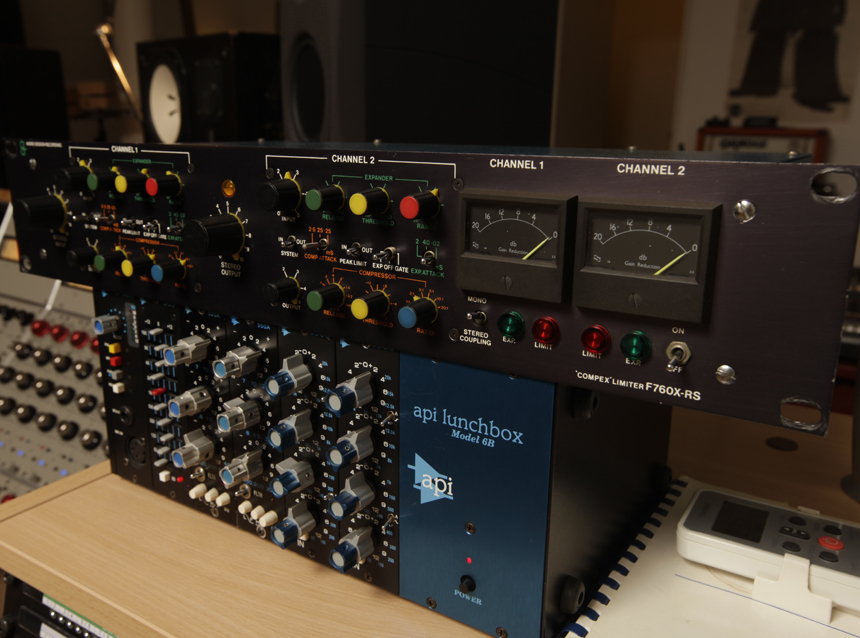In pictures: Joakim's analogue studio paradise
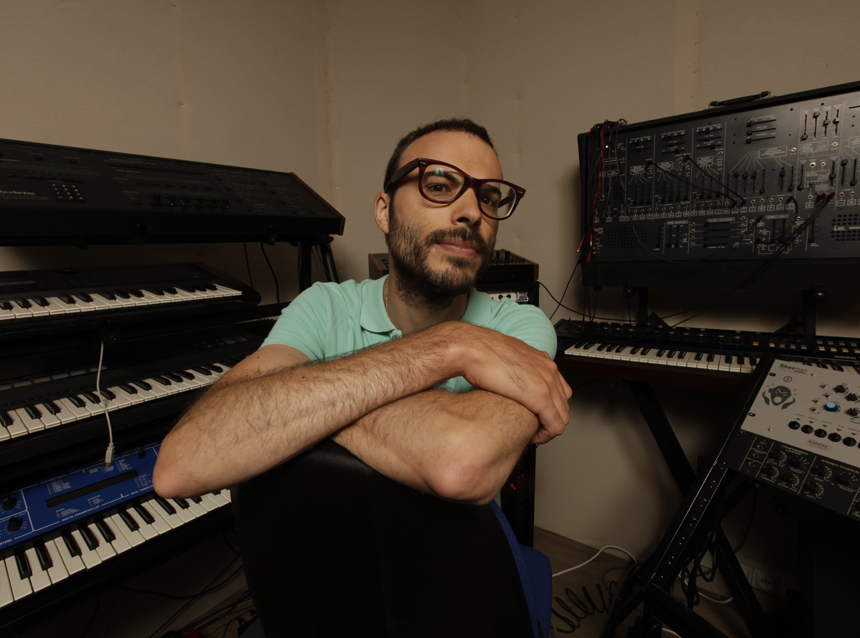
Welcome
Joakim is a producer who can do it all. From writing classical scores, being a solo indie-rocking-hipster dance hero or running his highly respected Tiger Sushi imprint.
Known simply by his first name, Joakim Bouaziz is a Parisien producer who has taken on so many different projects it's difficult to label him. Classically trained on piano, Joakim is a true virtuoso, but don't worry about episodes of twiddly finger flaunting, as his productions are a tape saturated, synth-fuelled delight.
With a heady mixture of analogue gear and retro techniques, Joakim produces outstanding tracks and has remixed for artists such as AIR, John Foxx, Röyksopp, Alter Ego and Friendly Fires. Having recently moved his studio, he's invested even more into his expanding arsenal of gear, with an incredible Wunder Audio console now proudly poised in the centre of the room.
Here, he shows us his incredible gear collection and studio facility.
NEXT: The studio

The studio
Partly used a a place to produce solo, electronic music and partly as a recording space for bands and acts that Joakim produces, the studio was always conceived as a multi-purpose facility.
"I believe that having a total recording and production independence is very important these days," Joakim explains. "Especially when the changes in the industry have meant it’s become more and more difficult to spend thousands in high-end big studios.”
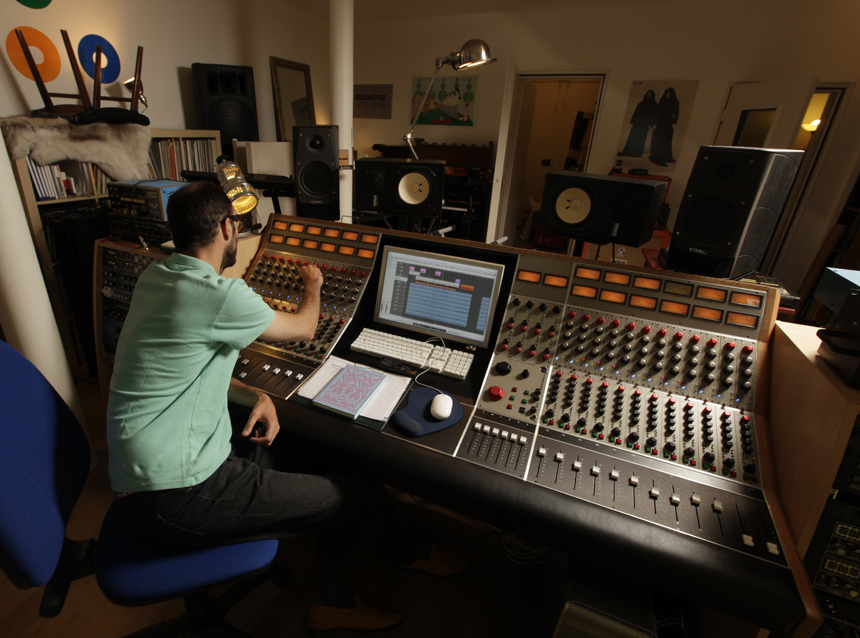
Wunder-ful
The centrepiece of Joakim's studio is the beautiful Wunder Audio console, proudly seated upright in the centre of the room. It's a very serious investment.
“Yeah, buying that desk was a very serious decision," explains Joakim. "I had the Trident Fleximix before but it wasn’t very easy to maintain, although it was much, much cheaper and even though the guy I bought it from in the US said it used to belong to one of the Jackson brothers. The Wunder Audio console is a big investment but it’s a kid’s dream to have it.
“I was moving studios and I thought I either had to stick with what I had or go for the absolute dream console and really go for it. So, I sold my apartment and here I am! [laughs]. Because I am working with bands as a producer a lot, I thought it was worthwhile to go completely independent and have this console.
"With this space I can record a full band live, which is fantastic. I don’t think I can really justify it, it’s quite irrational. I just wanted the best thing you could get these days to achieve the mixing of my dreams."
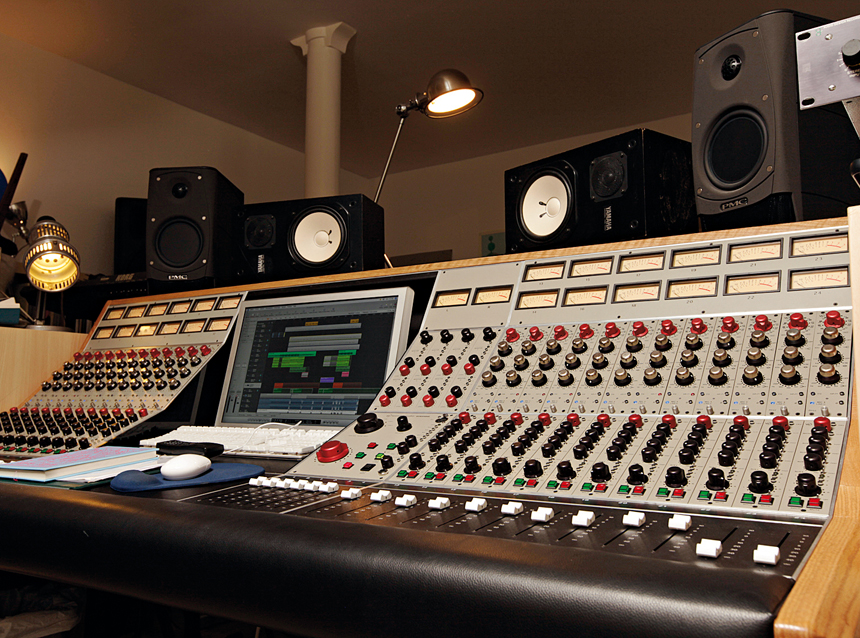
Wunderland
The story of how this boutique brand of studio consoles came to be is as passionate as the people whopurchase them.
"The story is that this guy, Mike Castoro from Austin, Texas, worked repairing and maintaining old Neve
consoles," Joakim reveals. "At one point he developed his own preamp to replace faulty pres in old Neves. Eventually, after selling loads of these pres he thought he might try to build his own console, so the Wunderbar is some sort of copy of a Neve from the ’70s but new.
"It’s super creamy sounding, really fat and simple to use. The best thing is that the mid bass frequencies always sound nice when you EQ them, I’ve found that to always be the weakness in other consoles. I was looking for a console that is not too big, or too complicated with the routing. I didn’t want to get lost when I could focus on more creative things.”
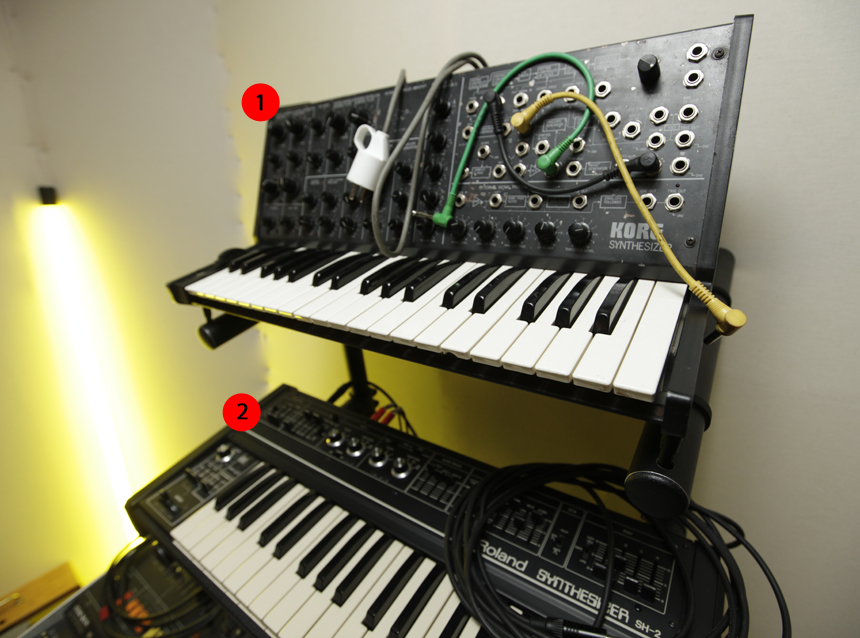
The first synth
With so many analogue synths around the studio, we asked to Joakim point out a few of his favourites and tell us a bit more about them.
1. Korg MS-20
"This is my first analogue synth and my favourite mono synth. For me it’s the best live synth because it almost feels like a guitar when you play it, especially the filter which weeps when you’re playing.”
2. Roland SH-02
"This is mainly used for basslines."
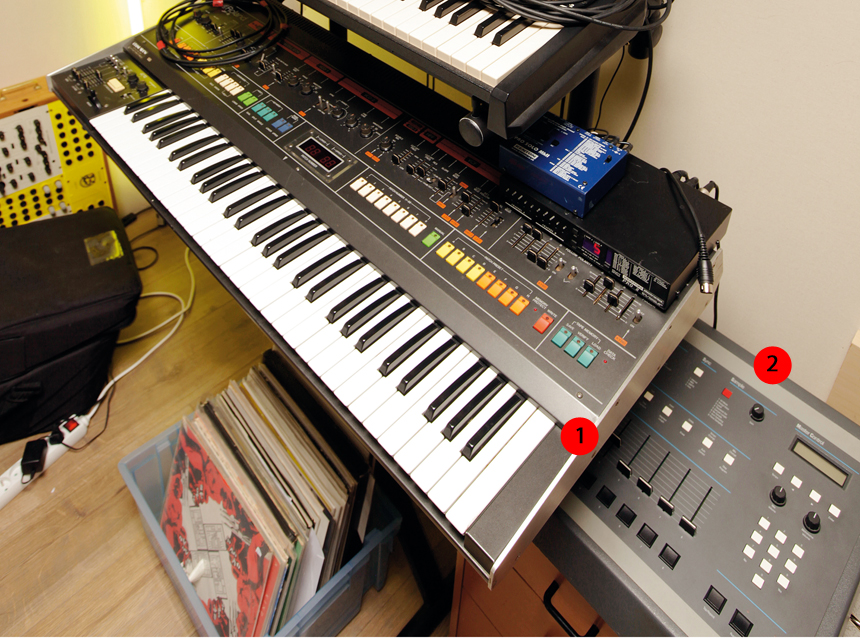
More synths
Moving down the rack in the synth corner, bigger analogue beasts begin to show their faces.
1. Roland Jupiter-8
"This is probably my main polyphonic synth and it gets used a lot in the studio and on my records.”
2. E-MU SP-1200
"When I have samples of drum machines, I don’t have them on a computer. I’ll put them in this machine because of the nice crunchy output stage."
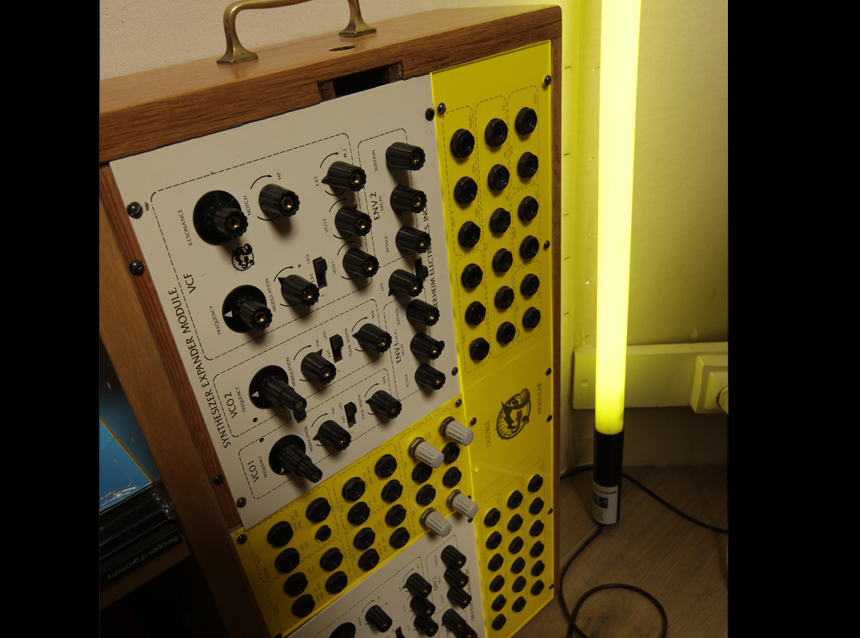
Tom Oberheim SEM Modular
Lurking right in the corner of the studio, leant up against a wall, is the extremely rare original SEM Modular built by synth godfather Tom Oberheim.
“A friend who helped me patch up the studio lent me this recently," Joakim tells us. "He collects
modular synths and I loved the sound of the filter. Even though it’s only a 12dB filter, the resonance on it just sounds incredible.”
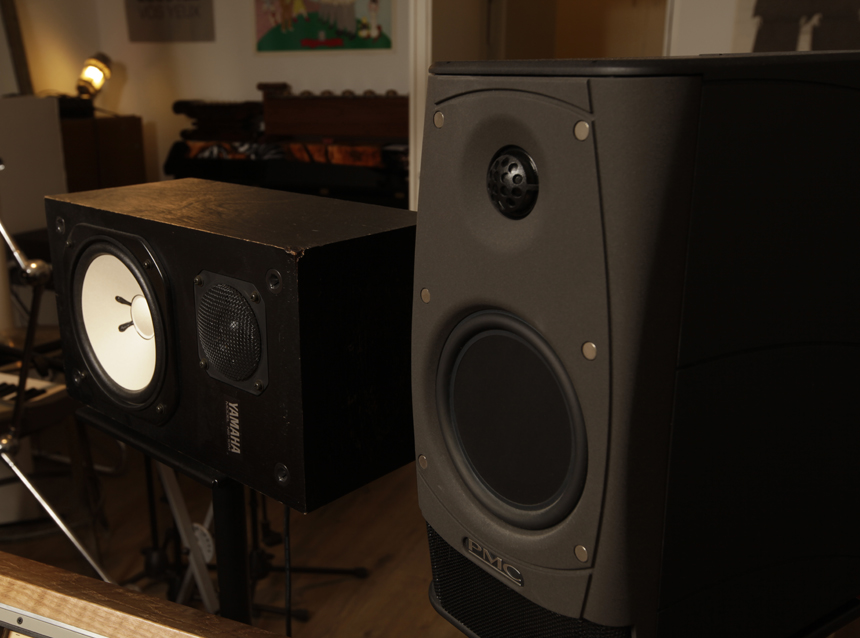
Monitoring
The usual set of Yamaha NS-10s sit on top of the console like a giant studio cliché, but next to them are Joakim's monitor of choice, the little-know PMC AML 1s.
“I’ve had these for a year but I bought them second-hand because they are so expensive. I worked in a studio in Paris where they had these and I was blown away. They are almost too good because they expose everything in your mix and you’re never happy with it! They have the best stereo imaging I’ve ever heard, but I use the NS-10s a lot too for checking the mix.”
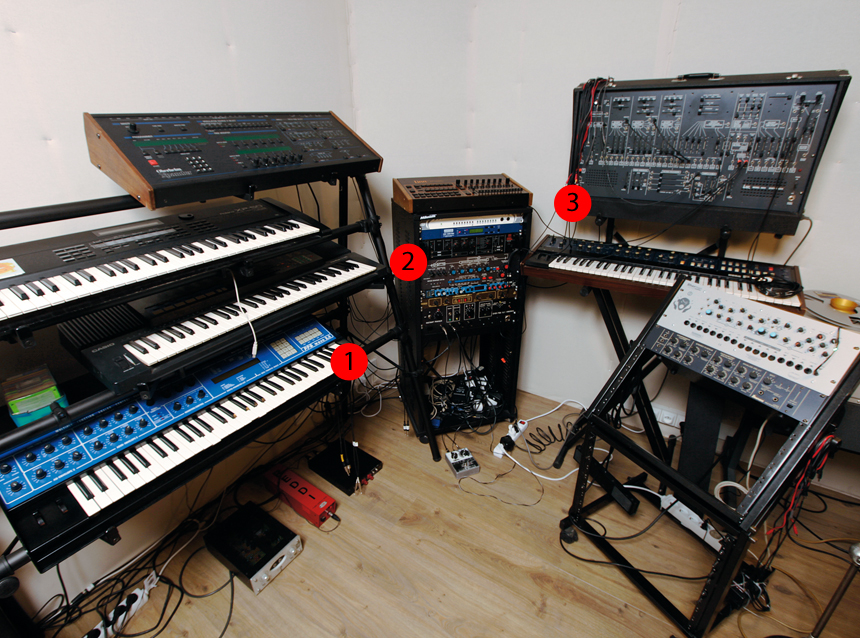
Synth corner 2
Joakim takes us through some of the synth and rack highlights in the other corner of the studio.
1. Waldorf PPG
"It’s not easy to find these, so it’s hard to get one as a bargain too. I had the Access Virus, I’ve found it was a sort of emulation of the PPG. It’s totally different from any analogue synth, because it’s not fully analogue, I guess.”
2. Ursa Major Space Station
“This is half reverb and half delay and one of the first digital delays. It has a special grain which I love in the early digital stuff. You really hear the sound of early Italo claps with this reverb.”
3. Arp 2600
"I bought this in the US. I collected it after playing the Miami Winter Music Conference. I’d been wanting one of these synths for years and I think it’s one of the best sounding synths I have now. I made a kick drum with it after seeing Vince Clarke do it and it’s the best sounding kick drum I’ve ever made, even better than the 808."
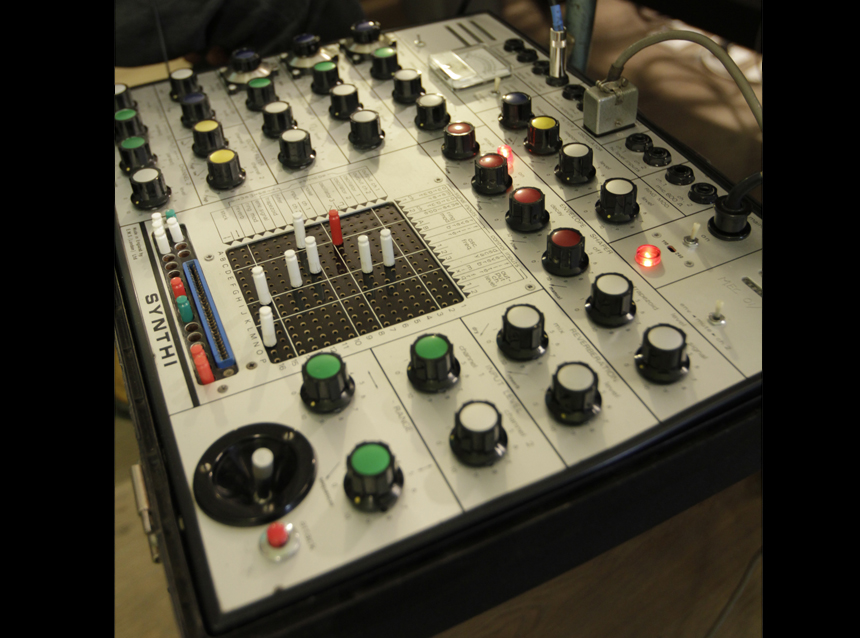
EMS Synthi
Yet another rarity in Joakim's studio. This time, it's the peg-powered British synth that is the EMS Synthi AKS, complete with blue touch-sensitive keyboard built into the attractive briefcase lid!
"This has a built-in sequencer which make for some interesting effects, and also a reverb that you can patch in using the pegs, giving you a very dirty reverb," Joakim tells us.

Gear junkie
Joakim wasn't able to acquire this enormous collection of kit overnight, it took time. “It was really gradual. Once I got a few really nice bits of gear, I realised there was no going back," he explains.
"First it was with synths then it was with drum machines. When you start using a drum machine and you compare the groove and feeling they have compared to using the computer you just can’t go back.
"Then I got the API EQ and began to realise what a real EQ is and how you can do so much with it and it will always sound good. I’m a nerd, so I just love this stuff, but software not so much. I like software and plug-ins where they do something completely different to what you can achieve in hardware. Software emulation for me is just a dumbed down version of the real thing, but I like Reaktor and software that enables you to mix the best of both worlds."
Liked this? Now read: Studios of the pros: stars' recording setups in pictures
Future Music is the number one magazine for today's producers. Packed with technique and technology we'll help you make great new music. All-access artist interviews, in-depth gear reviews, essential production tutorials and much more. Every marvellous monthly edition features reliable reviews of the latest and greatest hardware and software technology and techniques, unparalleled advice, in-depth interviews, sensational free samples and so much more to improve the experience and outcome of your music-making.


